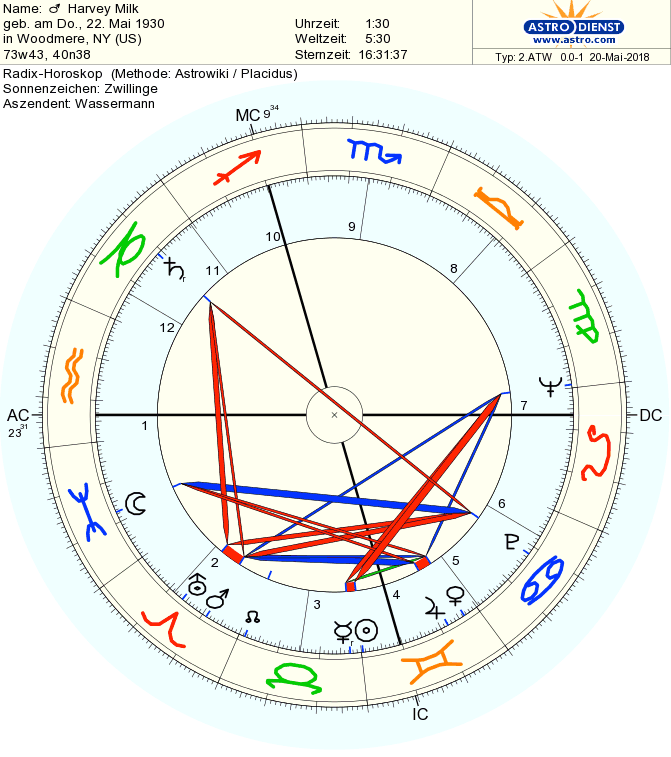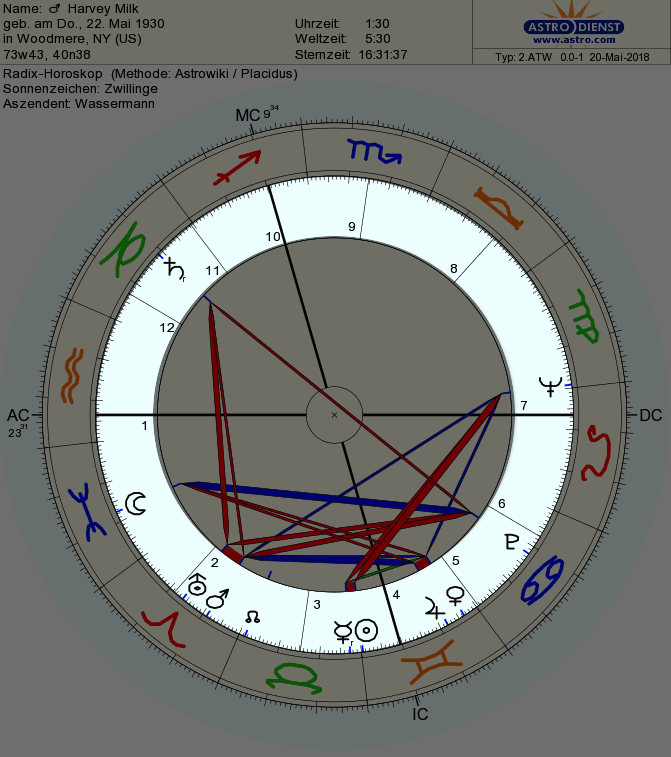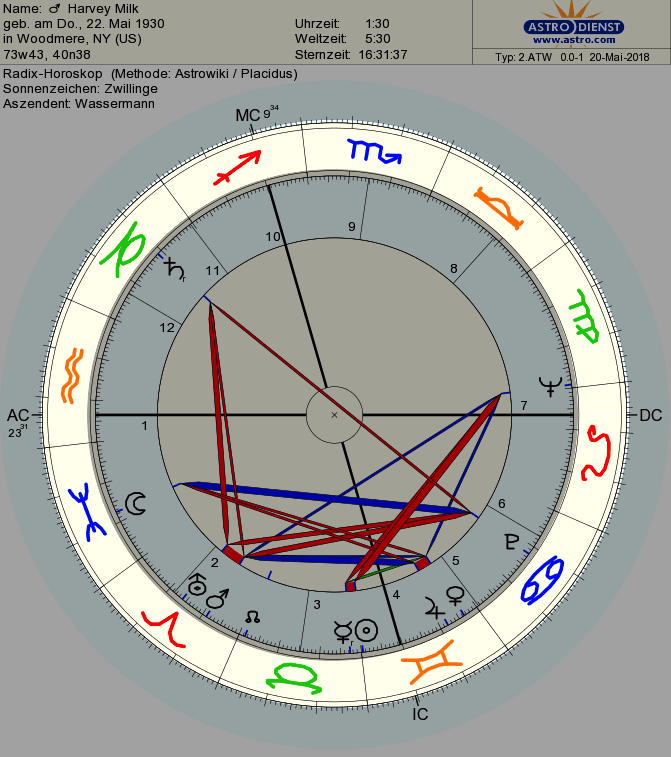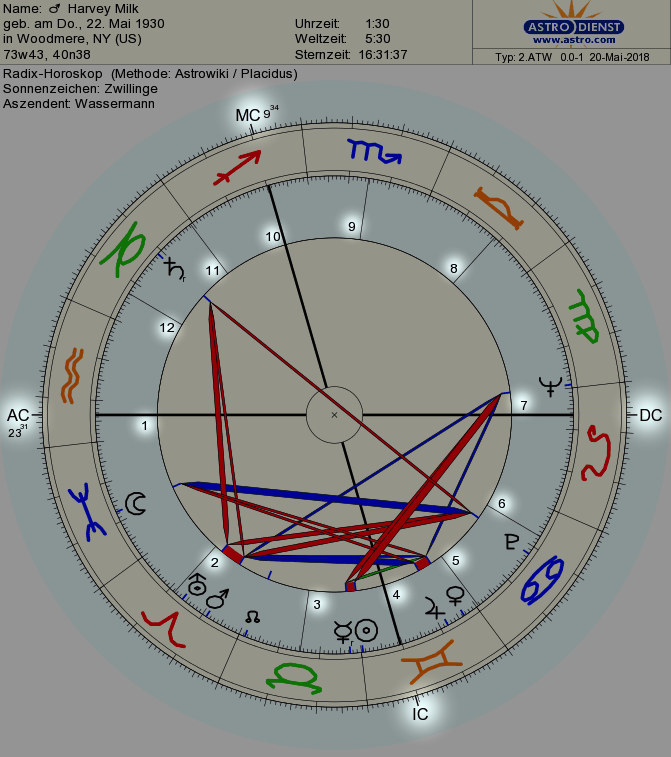Note: This page is a basic guide to navigating the different pieces on a natal chart. If you already know how to read a circular horoscope, I have pages on the signs, the planets, the houses, and aspects.
What a chart looks like
The term horoscope refers to a map of the planets’ positions in the sky at a given time, often presented in a circular chart. This diagram of the sky for the exact time and place someone was born is called their natal chart or birth chart, which is the focus of psychologically-oriented astrology.
For example, this is Harvey Milk’s natal chart, pulled from Astro Dienst’s celebrity database:

The core parts of a chart to consider are the planets, the signs, the houses, and aspects, which I’ll show you how to identify below.
the planets
On the middle wheel of this horoscope are the planets, highlighted in the image below. Each planet represents a different part of our psyche, though its specific coloring is influenced by other parts of the chart. This diagram also contains symbols for a couple asteroids and mathematical points, but they have more subtle effects, so I don’t discuss them in my reference pages.
For example, the Sun represents a person’s ego or sense of self. In Harvey Milk’s chart, the Sun (☉) is in Gemini (♊️), an intellectual and communicative sign. So we may say that Harvey Milk was a good communicator who facilitated the exchange of ideas, though this is influenced by other factors in the chart.

the signs
The outer wheel of this chart contains the symbols of the zodiac signs, which I’ve highlighted in the image below. The signs embody a set of characteristics, and the houses (areas of life) or planets (areas of the mind) in a certain sign will take on its characteristics.
For example, in this chart the planet Mars (♂), which represents our drive and ambition, is in the sign Aries (♈️), an initiator. You could say then that Harvey Milk was driven when following his goals, though this is influenced by other factors in the chart.

the houses
The black lines on the chart represent divisions between the 12 houses, and the initials AC, IC, DC, and MC represent important Angles in the sky. These points are calculated from the horizon and represent different areas of life. (There are many different ways to calculate houses, but on this site I generally use the Placidus method, where the Angles line up with specific houses.)
For example, Harvey Milk’s Tenth House (MC), which is associated with one’s vocation and aspirations in life, begins in the sign of Sagittarius (♐️), a philosophical and adventurous sign. This may indicate that he was drawn to a career with a broad impact on society, and fits with the fact that he left his career in finance to work in community organizing and politics.

Aspects
The lines on the inner circle of a chart are called aspects. They denote special angles which describe the relationships between planets on the chart. In this chart red lines represent difficult relationships with potential for growth, blue lines represent harmonious relationships with potential for stagnation, and green lines represent less potent aspects.
For example, in this chart Mars (♂) and Saturn (♄) are about 90 degrees apart, indicated by a red line on the diagram below. Mars represents one’s ambitions, and Saturn represents rules and restrictions. The angle of 90 degrees, called a square, is considered an aspect of conflict. So we may say that Harvey Milk’s ambitions were in conflict with the rules around him or with restrictions he placed on himself. However, he may have been able to reconcile this conflict later in life and channel it towards his political career.

Going Forward
There are a lot of interacting factors in a natal chart, and it takes years of dedicated study to learn how to interpret them accurately. I have more detailed pages about the planets, the signs, the houses, and aspects if you’d like to read more in-depth about each of these factors.
For newer astrologers like myself, it can be overwhelming to try and consider all of this information at once. One helpful guideline to remember is the rule of three, a principle that cautions astrologers only to make claims about a trait or event if there are at least three important placements that indicate it. This approach can help you to avoid getting lost in less important details.
